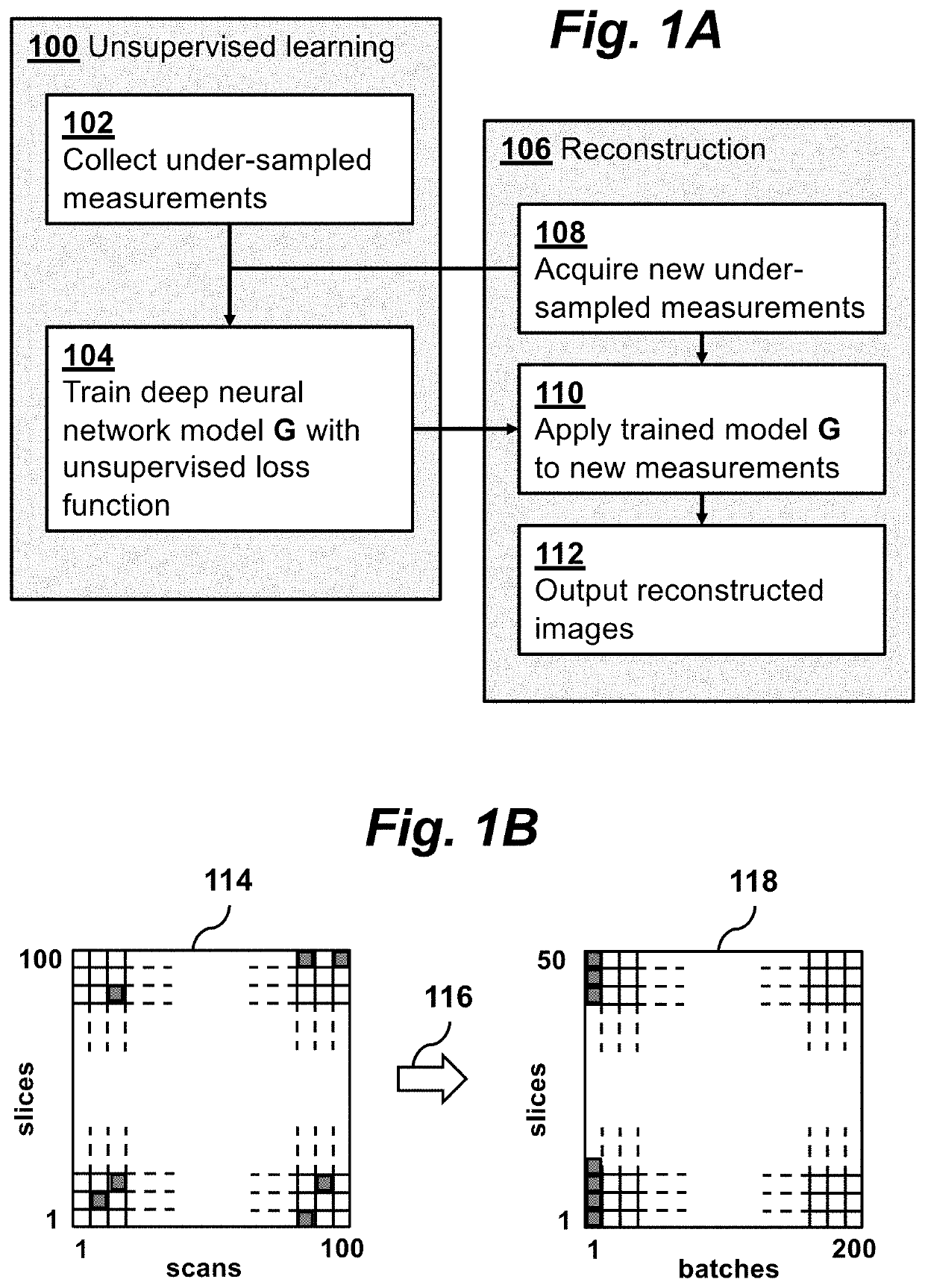Method for Performing Magnetic Resonance Imaging Reconstruction with Unsupervised Deep Learning
- Summary
- Abstract
- Description
- Claims
- Application Information
AI Technical Summary
Benefits of technology
Problems solved by technology
Method used
Image
Examples
Embodiment Construction
[0018]An overview of a workflow according to an embodiment of the invention is shown in FIG. 1A. There are two major steps: unsupervised training 100 and reconstruction 106. The training step 100 performs unsupervised learning based on under-sampled data acquired from a variety of different scans. The reconstruction step 106 uses the trained model to perform inference and reconstruct and image from a clinical under-sampled scan. The model can be updated by training with the new under-sampled data. The data is then applied to the model to produce a reconstructed output image.
[0019]The unsupervised training 100 of the network is typically performed by the manufacturer of the Mill apparatus, but the same training technique is used in the clinical setting for updating the model during clinical use, as will be described later. In the initial training, existing under-sampled scans are collected in step 102 based on under-sampled data acquired from a variety of different scans. In step 104...
PUM
 Login to View More
Login to View More Abstract
Description
Claims
Application Information
 Login to View More
Login to View More - R&D
- Intellectual Property
- Life Sciences
- Materials
- Tech Scout
- Unparalleled Data Quality
- Higher Quality Content
- 60% Fewer Hallucinations
Browse by: Latest US Patents, China's latest patents, Technical Efficacy Thesaurus, Application Domain, Technology Topic, Popular Technical Reports.
© 2025 PatSnap. All rights reserved.Legal|Privacy policy|Modern Slavery Act Transparency Statement|Sitemap|About US| Contact US: help@patsnap.com



